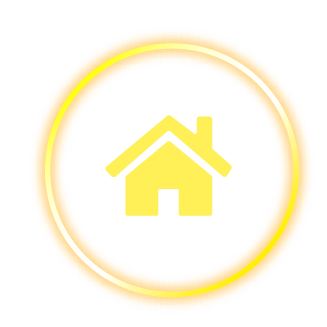Lighting is often taken for granted. We tend to forget to take into account when designing office spaces or setting up home workspaces. When we take a closer look at the effects lighting can have on workspaces, we see a clear correlation between proper lighting and employee productivity and wellbeing. In fact a 2019 study by Future Workplace found that 1 in 3 workers rated lighting as one of the most important factors affecting wellbeing in their offices or workspaces.
There are numerous lighting options available for offices, and while they may do the job of illuminating the space, that doesn’t necessarily mean they’re effective or beneficial for employees.
There are two main types of lighting: Natural and Artificial light.
Natural lighting is any organic light that occurs naturally, such as sunlight, moonlight, starlight, and fire. Artificial lighting is any light that relies on an external energy source (like batteries or electricity). Ideally, a workspace should use natural lighting as far as possible, but that’s not always possible, especially if the workspace operates in the evening and at night. There are a multitude of different ways a workspace can be lit using artificial lighting, and colour temperature and distribution should be taken into account when choosing lighting.
Why lighting matters
The science behind proper lighting revolves around human physiology and psychology.
Lighting has a direct impact on our moods, with insufficient lighting aggravating depression and fatigue. Lack of exposure to natural sunlight can lead to a vitamin D deficiency. Adequate lighting, on the other hand, can boost our moods and energy levels, which in turn boosts out motivation and productivity.
Lighting also affects appetite. Insufficient lighting stimulates the appetite, while brightly lit rooms can help regulate our metabolisms.
The most significant effect lighting has is on our circadian rhythms. Our circadian rhythm is the body’s internal clock that controls when we need to sleep. The average person’s circadian rhythm mirrors day and night, meaning we wake up in the morning after sunrise, stay awake during the day, fall asleep after the sunsets, and sleep through the night. Sunlight is the factor that triggers the release of certain hormones, such as melatonin to induce sleep, and adrenaline to wake the body up.
If a workspace uses dim lighting during the day, our brains can get confused and begin releasing melatonin during our waking hours, making us drowsy and unproductive. If a workspace that operates after sunset uses harsh, bright light, this can delay melatonin release and cause insomnia and burn-out.
Effects of lighting on employee productivity and wellbeing
Natural light has been proven to be the most effective type of lighting in terms of increasing employee productivity, energy levels, motivation, and satisfaction. Sunlight in the workspace can reduce stress, anxiety, and incidence of headaches and eye strain.
Artificial lighting that closely mimics natural sunlight in terms of brightness and color temperature has shown very similar results. Artificial light that doesn’t mimic sunlight has shown to decrease productivity, aggravate depression and fatigue, and cause headaches, migraines, and eye strain.
How to improve workspace lighting
The best way to improve workspace lighting is to either make use of natural lighting or use artificial lighting that mimics sunlight.
In terms of artificial lighting, fluorescent lights can be problematic as it can be difficult to get the colour temperature right. LEDs have shown the best results as they closely mimic the colour temperature of natural light. Colour Rendering Index (CRI) measures how closely artificial light matches natural light on a scale of 1-100. Most LEDs have a CRI of 95, making them the ideal choice.
Finding the balance between the different types of artificial light will depend on the needs of your team and what the space allows.
Warm lighting is inviting and relaxing, making it ideal for intimate settings such as break rooms.
Mid-tone lighting is welcoming but still cool enough to keep staff alert, making it ideal for conference or meeting rooms.
Cool lighting promotes alertness, concentration and decreases fatigue, making it ideal for general working spaces and creative brainstorming areas
How to create the Illusion of Space
A large part of proper lighting is knowing how to use the space you have.
Room colour, particularly the colour of the walls can make the space seem bigger or smaller than it actually is. White walls reflect light, making spaces look bigger. If you’re not keen on all white, pastel colours and light greys have the same effect. Avoid dark colours, especially in small rooms. Shiny floors also make a difference. Light will bounce off of shiny or light coloured floors. Avoid using rugs or carpeting in small rooms, as the material will absorb light.
Strategically place lamps and extra lighting, illuminating dark corners or desks that don’t get as much light as the general workspace. Lamps are also perfect for task lighting, which you can read more about in one of our previous blog posts.
LED lights are the best for creating space as they offer the greatest distribution of light. Their brightness won’t dim and their colour won’t fade over time like other bulbs tend to do.
Home office lighting
It’s easy to forget to apply these same lighting principles to home offices and workspaces as well. When setting up an office or workspace at home, work by a window if possible. Arrange your desk so that the window is either behind you or at a 90° angle to where the light shines in. This will reduce eye strain and fatigue and screen glare. Use LED overhead lighting where possible by either replacing the bulbs in built in light fittings, or using LED lamps. Remember to balance the colour temperature properly. Essentially, you should set up your home workspace lighting the same way as a business office would.
As it turns out, office lighting isn’t quite as simple as you’d think. Don’t get overwhelmed, though. Follow the information and tips we’ve laid out above, and you should be good to go.
If you’re considering revamping your home or office lighting, contact us today for a free on-site quote and Expert Electrical Service.





